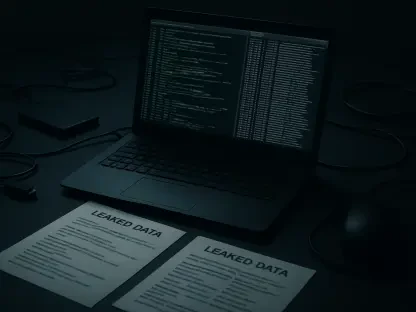In recent developments, Styra has patched a crucial security flaw identified in its Open Policy Agent (OPA) that could have allowed remote attackers to compromise NTLM credentials. Discovered by cybersecurity researchers and designated CVE-2024-8260, this vulnerability necessitated immediate attention due to its potential for significant security breaches.
Understanding the Vulnerability: NTLM Hash Leak in OPA
What is CVE-2024-8260?
CVE-2024-8260 is a security flaw identified in the Open Policy Agent (OPA), primarily affecting its Windows-based Command Line Interface (CLI) and Go Software Development Kit (SDK). This vulnerability stems from improper input validation, which could result in the leaking of NTLM hashes. NTLM (New Technology LAN Manager) hashes are critical as they can be used in various malicious ways if intercepted. In this case, the flaw allowed remote attackers to obtain the Net-NTLMv2 hash of the active user on a Windows device running the OPA application. The consequence is a significant security risk that could lead to unauthorized access and potential data breaches.
The exposure of these hashes is particularly alarming as NTLM, despite being an older protocol, remains prevalent in many legacy systems. Cybersecurity professionals emphasize that once an NTLM hash is intercepted, it can be used to attack other systems and services that rely on NTLM for authentication. The need for proper input validation and the risks tied to its absence are starkly exemplified by this vulnerability, shedding light on broader systemic issues in software development and protocol implementation.
Mechanics of the Exploit
To exploit the vulnerability, attackers must first gain an initial foothold within the target environment. This often involves social engineering tactics like phishing. Following this, the execution of the OPA CLI is necessary. The attackers then manipulate the OPA CLI or the OPA Go library by passing a Universal Naming Convention (UNC) path rather than a Rego rule file. This action triggers an unintended process, leading to the transmission of the NTLM hash over the network.
For the exploitation to be successful, several conditions must be met. The victim’s machine, for instance, needs to send outbound SMB traffic over port 445, a common feature in many Windows-based processes involving NTLM authentication. This nuance of the attack underscores the importance of understanding network behaviors and configurations when assessing vulnerabilities. Effective social engineering combined with technical manipulation can pave the way for profound security breaches, often leaving minimal traces of the initial compromise.
Consequences of Exploitation
Potential Impact on Security
Upon successful exploitation, remote attackers could capture the NTLM hash. This capture could have severe implications, as it could allow attackers to relay the captured hash to bypass authentication mechanisms. Beyond relay attacks, the intercepted hash can also be used in offline cracking attempts to reveal plain-text passwords. In a world increasingly reliant on digital security, such breaches can lead to catastrophic outcomes that ripple through an entire organization, exposing sensitive data and undermining trust in digital systems.
The immediate risk posed by captured NTLM hashes is not just hypothetical. Real-world scenarios frequently demonstrate how such data, if relayed, may grant unauthorized access to various services and systems. This poses a significant threat, especially for organizations relying on those systems for critical operations. Such vulnerabilities stress the necessity for robust and continually updated security protocols to preemptively neutralize emerging threats and safeguard sensitive information from malicious actors.
Steps Toward Mitigation
Styra took prompt action upon the responsible disclosure of the flaw by cybersecurity researchers from Tenable on June 19, 2024. Recognizing the severity, Styra released version 0.68.0 on August 29, 2024, which addresses the input validation flaw, effectively stopping the unintended transmission of NTLM hashes. This swift response from Styra demonstrates a commitment to security and an understanding of the critical nature of timely patches in mitigating vulnerabilities. The newly patched version reflects concerted efforts to rectify security lapses that could have wide-reaching implications if left unaddressed.
Organizations using OPA are encouraged to update to this patched version to eliminate the security risk. It’s a vital step in maintaining the integrity and security of their systems. Beyond individual updates, this incident serves as a broader reminder of the importance of regular software maintenance and the role of systemic checks in preempting security mishaps. Regularly incorporating security patches is fundamental to creating resilient IT infrastructures that can withstand evolving threats.
Broader Context and Industry Trends
The Evolution of NTLM Security
NTLM’s fundamental vulnerabilities have long been recognized within the security community. Microsoft’s efforts to phase out NTLM in favor of more secure protocols like Kerberos reflect an industry-wide shift toward enhancing authentication security. NTLM’s susceptibility to relay attacks, among other weaknesses, underscores the need for this transition. By moving to Kerberos, organizations can leverage stronger encryption and mutual authentication, significantly reducing the risk of compromise through hash capture and relay attacks.
The CVE-2024-8260 vulnerability in OPA further emphasizes these concerns, highlighting how legacy protocols can inadvertently expose modern systems to sophisticated attacks. The case of NTLM in particular exemplifies the broader industry push to modernize and secure authentication mechanisms, ensuring they can withstand the demands and threats of contemporary digital environments. Embracing more secure protocols not only fortifies individual systems but also contributes to a more resilient and trustworthy internet ecosystem.
Importance of Secure Coding Practices
This incident underscores the necessity of rigorous secure coding practices and thorough input validation. For developers, such practices are crucial in building resilient applications that can withstand potential vulnerabilities. Implementing secure coding conventions and continuously training developers on the latest security threats are essential strategies in preempting issues before they arise. Comprehensive code review processes and automated security testing can further enhance the robustness of software, catching potential vulnerabilities early in the development lifecycle.
Organizations must adopt these practices actively, incorporating regular security audits and integrating security checks into their development pipelines. Ensuring that both proprietary and open-source software components maintain high-security standards is critical. This multifaceted approach to security—encompassing education, technological tools, and procedural rigor—creates an environment where vulnerabilities are less likely to slip through the cracks, and when they do, they are swiftly addressed.
Impact on Cybersecurity Practices
Proactive Security Measures
The exposed vulnerability serves as a critical reminder for organizations to implement proactive security measures. This includes regular updates to software components, minimizing unnecessary service exposure, and proper network segmentation to contain potential breaches. Such strategies are part of a broader defensive posture that prioritizes anticipation and prevention over reaction. Proactive security hygiene not only protects against known vulnerabilities but also positions organizations to swiftly adapt to emerging threats.
Building a culture of proactive security means continually assessing and fortifying every layer of an organization’s digital infrastructure. From endpoint protections and firewalls to user training and policy enforcement, every element plays a role in maintaining overall cybersecurity health. Continuous monitoring and threat intelligence integration can further provide early warnings of potential attacks, enabling swift countermeasures before an attack can inflict significant damage.
Vigilance in Open-Source Security
Given OPA’s widespread integration across various applications, the incident underscores the importance of vigilance in managing open-source projects. Organizations relying on open-source software must ensure that all integrated components are up-to-date with the latest security patches and actively monitor for any disclosed vulnerabilities. The inherent transparency of open-source software can be both a strength and a vulnerability—it facilitates community scrutiny and rapid issue identification, but it also means that discovered flaws are openly known and potentially exploitable if not promptly addressed.
Active participation in open-source communities can enhance vigilance by creating networks of shared knowledge and collaborative problem-solving. Organizations should foster internal policies that prioritize contributions to these communities, both in terms of reporting vulnerabilities and helping develop patches. This symbiotic relationship strengthens the open-source ecosystem, ensuring it remains a viable and secure option for enterprises seeking flexible and cost-effective software solutions.
Addressing Related Vulnerabilities: Akamai’s Disclosure
CVE-2024-43532 in Remote Registry Service
In a related context, Akamai’s recent disclosure of CVE-2024-43532, a privilege escalation flaw in Microsoft’s Remote Registry Service, has brought additional attention to the need for robust security in legacy systems. With a CVSS score of 8.8, this vulnerability leverages NTLM relay attacks to exploit outdated transport protocols, allowing attackers to gain SYSTEM privileges. The prominence of such vulnerabilities highlights the importance of continually reassessing and updating older components within an IT environment to prevent them from becoming weak points.
The specifics of CVE-2024-43532 draw a parallel to CVE-2024-8260, emphasizing how pervasive NTLM’s issues are when it comes to relay attacks. Such vulnerabilities require organizations to adopt a holistic approach to cybersecurity, accounting for every component and interaction within their digital ecosystems. Patching legacy systems and gradually replacing them with more secure alternatives are strategic moves toward long-term security stability.
Mitigation and Microsoft’s Role
Microsoft’s timely patching of this vulnerability earlier in the month reflects ongoing efforts to secure legacy systems while transitioning towards more secure authentication protocols. This scenario reaffirms the necessity for continuous vigilance and timely updates within the cybersecurity landscape. Microsoft’s actions underscore the broader industry acknowledgment that legacy systems, while often indispensable, must be continually fortified against newly uncovered vulnerabilities.
The proactive engagement of companies like Microsoft with legacy system security is an essential part of the broader cybersecurity ecosystem. These steps not only protect individual users but also enhance the overall resilience of the internet infrastructure. Ensuring that legacy systems do not become entry points for attackers is a critical task that requires ongoing commitment and resources.
Future Outlook
Phasing Out NTLM for Enhanced Security
In recent reports, Styra has addressed a critical security vulnerability discovered in its Open Policy Agent (OPA), identified as CVE-2024-8260. This flaw, uncovered by vigilant cybersecurity researchers, posed a significant risk as it could have enabled remote attackers to access and compromise NTLM credentials, leading to severe security breaches. The urgency of fixing this issue was paramount, given the potential ramifications for unauthorized access and the exploitation of sensitive information.
The responsibility of maintaining robust security measures is a continuous battle in the tech industry, and the swift action taken by Styra highlights the importance of timely responses to potential threats. This instance serves as a reminder of the relentless efforts needed to safeguard digital environments. Such vulnerabilities can have far-reaching impacts, affecting not just the individual users but also larger networks and organizational data integrity. The proactive patching of CVE-2024-8260 underscores the critical role of cybersecurity vigilance and the essential nature of immediate interventions in the tech realm.









